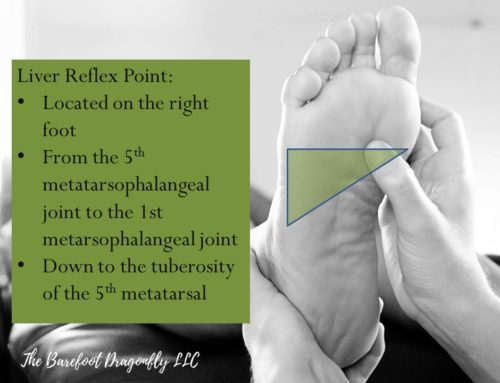Indoor air quality (IAQ) has been on a lot of our minds this past year as we navigate being in the midst of a viral pandemic that travels through exhalations, talking, singing, shouting, sneezing, and coughing. Teams of scientists in the fields of epidemiology, public health, aerosols, fluid mechanics, and those involved in the design and construction of environmental comfort (heating and air conditioning) have helped to give us road maps for making indoor spaces safer. In January 2020 I started cracking windows open in the studio as the first reports of an airborne virus were being discussed. I haven’t given a session, or hosted a practicum class, with the windows closed since – rain or shine, hot or cold.
Fresh Air
Researchers have found that fresh air in indoor spaces impacts multiple areas of our health. In a 2011 review of the available literature, Santa Cruz researchers found that poorly ventilated buildings contributed to sick building syndrome (SBS), inflammation, respiratory infections, asthma symptoms, childhood allergies, and an increased amount of short‐term sick leave days by employees (Sundell et al).
The guidance on how much fresh air should be brought into a building varies depending on who you’re talking to. Ventilation guidelines are measured in how many times a room’s stale air is completely exchanged with outside air and is measured as ACH: Air Changes per Hour. The American Society of Heating, Refrigerating and Air-Conditioning Engineers (ASHRAE) recommends a minimum of 0.35-1 air changes an hour for homes and increases their rates based on how many people are gathering in the space, what their activities are, and whether there is an airborne contaminant like virus particles. In healthcare settings ASHRAE and the CDC specify a minimum of 2-3 fresh air changes per hour but acknowledge the need for fresh air changes beyond 50 times an hour to remove contaminants from the room in a timely fashion (more on this later).
CO2 Monitoring in the Studio
 One of the tools I’ve been very interested to explore during the pandemic is the use of carbon dioxide (CO2) meters to monitor how effectively one is ventilating a space with fresh, outside air. It works on the concept that outside air is roughly 415 parts per million (ppm) of carbon dioxide with indoor spaces ranging from a highly ventilated 450 ppm to very poorly ventilated spaces reaching into the thousands of ppms of CO2.
One of the tools I’ve been very interested to explore during the pandemic is the use of carbon dioxide (CO2) meters to monitor how effectively one is ventilating a space with fresh, outside air. It works on the concept that outside air is roughly 415 parts per million (ppm) of carbon dioxide with indoor spaces ranging from a highly ventilated 450 ppm to very poorly ventilated spaces reaching into the thousands of ppms of CO2.
I’m using the aranet4 (pictured), a portable, battery-powered meter, and the TIM10 meter by the folks at co2meter.com. The guidance on the ideal range for indoor spaces also varies according to whom is giving suggestions.
- Norway, Portugal, and Taiwan have implemented laws setting a maximum of 1,000 ppm CO2 for indoor spaces.
- Washington state set a limit of 450 ppm for indoor dining at restaurants and pubs in January this year.
- A 2004 National Institutes for Occupational Safety and Health (NIOSH) study found sick building syndrome starts to diminish when CO2 goes below 800 ppm.
- A 2019 Taiwanese study on a tuberculosis outbreak in the school system found that when they ventilated the classrooms, bringing CO2 from as high as 3,000 ppm down below 600 ppm the outbreak was completely arrested.
- Jose-Luis Jimenez, an aerosol expert at the University of Colorado Boulder, Jose-Luis Jimenez recommends keeping CO2 under 700 ppm.
- Richard Corsi, an air quality expert and dean at Maseeh College of Engineering and Computer Science at Portland State University, notes that 1,000-1,100 ppm in classrooms has been a guideline for odor control and is insufficient ventilation for an airborne virus.
- Kimberly Prather, atmospheric chemist at the department of Chemistry and Biochemistry at UC San Diego, warns about the sharing of other people’s exhalations at 800 ppm.
- Linsey Marr, aerosol expert at Virginia Tech, talks about the importance of getting under 600 ppm for indoor spaces with multiple occupants, like gyms.
Based on the above my takeaway is to aim for around 600 ppm and definitely getting concerned if the sensors read above 800 ppm (with the caveat that there’s not a gas stove or furnace on and actively contributing to the CO2 in the room).
Cleaning the Studio Air with HEPA Filters
Air filtration is still a large part of my efforts to reduce the risk of transmission of infectious virions in the breathing space in my home and studio. In the studio I run two HEPA filters that each have a clean air delivery rate of 400 cfm (cubic feet per minute) for smoke, so a combined 800 cfm. The studio is 360 square feet, so these two HEPA filters can clean the air 16.67 times an hour, or once every 3.5 minutes. This takes up the slack where fresh air may not be diluting virions quickly enough.
On a cool, dry day I find I can use a small dual-blade window fan capable of exhausting 272 cfm from the room and passively drawing fresh air from the window on the other side of the room to keep my CO2 sensor around 600 ppm. On a warm, muggy day I may have to swap out my little window fan for a box fan with a stronger motor that can exhaust at a much higher volume to keep the CO2 sensor in that 600 ppm range.
After the room has been in use it needs time to clear the air. How much time? According to the CDC, if I’m running 16.67 air changes per hour with the HEPA filters and 5.67 ACH with the window fan I need to air out the room for about 20 minutes to be 99.99% airborne contaminant free.
I ran the numbers for my guest bathroom too since there’s a risk of aerosolizing fomites with flushing toilets and one can never unlearn that. So my bathroom is 5.5 feet deep by 5 feet wide for a total of 27.5 square feet. I’m running a HEPA filter continuously that has a smoke CADR of 70 so based on the size of bathroom I’ve got 18.75 ACH. We brought our electrician in to upgrade the bathroom vent and rewire the switch so the vent runs whenever the lights are switched on (it was on a separate switch before) and it gives us another 13.39 ACH. Between clients I let the bathroom sit for 15 minutes unoccupied, then go in to clean and disinfect the space.
Online calculators I like, include:
- Square footage calculator – everything but the tape measure
- Air changes per hour calculator – just plug in your room’s square footage and the CADR rate of your air purifier
- Assorted calculators – I’m not a fan of the pay-to-play reviews but these calculators are great
Workaround for Pollen + Open Windows

Allergy season has been particularly unfun when trying to ventilate indoor spaces but I’ve found a product that has been a game changer here in the studio that we use all over the house. R.E.P. Industries out of Pennsylvania makes a pollen filter screen that fits into the window opening, and using baffles, passively filters the air. It has a MERV (Minimum Efficiency Reporting Value) rating of 8 which will capture 90% of dust, molds, and pollens down to 3-10 micrometers in size. And the activated charcoal in the filter also captures smoke from pedestrians and exhaust fumes from street traffic. I have no affiliation with this company but I love these pollen filter screens! You can get a couple sizes through Home Depot, and a wider variety of sizes as well as replacement filters through their PollenRelief.com site.
CO2 Monitoring Outside of the Studio
Since my Aranet4 is connected to my smartphone via Bluetooth and an app I take it with me whenever I leave the house to run errands or socialize with my quaranteam members in indoor spaces. Keeping with the same guidelines from above, I’m looking for ideal ranges around 600 ppm. For example, my friend and colleague Phyllis Kung at PK Acupuncture uses both ventilation and HEPA filtration in her treatment rooms so during a recent acupuncture appointment I felt very comfortable with a reading of 625 ppm. However, during a recent visit to a local pharmacy I did not feel comfortable at all when the sensor picked up 952-1,053 ppm.
You can follow the hashtag #covidCO2 on Twitter, Facebook, Instagram, and other social platforms. There’s a variety of folks out there posting about their encounters with indoor spaces and a handheld CO2 sensor, it’s rather enlightening! Below is a gallery of some of the sensor readings I’ve taken while out running errands.
- CO2 reading taken at PK Acupuncture
- CO2 reading taken at Homegoods
- CO2 reading taken at Petsmart
- CO2 reading taken at IKEA
- CO2 reading taken at Lowe’s
- CO2 reading taken at People’s Pharmacy
- CO2 reading taken at Savers
- CO2 reading taken at HEB
- CO2 reading taken at Costco













Leave a Reply